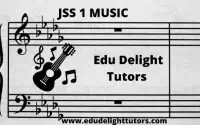Understanding Production: Types, Stages, and Effects
Business Studies JSS 1 – Second Term Lesson Plan
Week 1: Production
Lesson Plan Presentation
Subject: Business Studies
Class: JSS 1
Term: Second Term
Week: 1
Age: 10–12 years
Topic: Production
Sub-topic: Types and Effects of Production
Duration: 40 minutes
Behavioural Objectives
By the end of the lesson, students should be able to:
- Define production.
- Explain the types of production.
- List and describe the stages of production.
- State the positive and negative effects of production on society.
- Give examples of each type of production.
Keywords
- Production
- Goods
- Services
- Primary production
- Secondary production
- Tertiary production
Set Induction
The teacher asks students to mention items they use daily, such as clothes, food, and furniture. The teacher then asks how these items were made and how they reached them.
Entry Behaviour
Students are familiar with various goods and services used in their daily lives.
Learning Resources and Materials
- Pictures of a farm, factory, and a shopping mall
- Videos on production processes
- Charts showing different types of production
Building Background/Connection to Prior Knowledge
Students have seen farmers planting crops, factory workers making goods, and traders selling products in markets.
Embedded Core Skills
- Critical thinking
- Communication
- Collaboration
Reference Books
- Lagos State Scheme of Work
- Business Studies for JSS 1 by A. O. Yusuf
- Essential Business Studies for Junior Secondary Schools
Instructional Materials
- Whiteboard and markers
- Flashcards with examples of each production type
- A short video on production
Lesson Content
Definition of Production
Production is the process of creating goods and services to satisfy human wants. It involves changing raw materials into finished goods and distributing them to consumers.
Types of Production
-
Primary (Extractive) Production
- This involves collecting natural resources from the environment.
- Examples: Farming, fishing, mining, lumbering, hunting.
-
Secondary (Manufacturing) Production
- This involves converting raw materials into finished goods.
- Examples: Bread-making, car production, textile industry, road construction.
-
Tertiary (Service) Production
- This involves distributing goods and providing services.
- Examples: Retailing, transportation, banking, entertainment, tourism.
10 Examples of Production Activities
- A farmer planting and harvesting maize (Primary)
- A fisherman catching fish in the river (Primary)
- A carpenter making wooden chairs (Secondary)
- A factory producing soft drinks (Secondary)
- A tailor sewing clothes (Secondary)
- A driver transporting goods to the market (Tertiary)
- A shopkeeper selling food items (Tertiary)
- A doctor treating a patient (Tertiary)
- A teacher giving lessons in school (Tertiary)
- A bank processing a loan for a business (Tertiary)
Effects of Production on Society
Positive Effects
- Provides goods and services for human needs.
- Creates job opportunities.
- Helps in economic development.
- Improves living standards.
- Encourages technological advancement.
Negative Effects
- Causes environmental pollution.
- Leads to deforestation.
- Produces industrial waste.
- Increases noise pollution.
- May lead to exploitation of workers.
Evaluation
Fill-in-the-blank Questions
-
Production is the process of creating ________ and services.
a) Problems
b) Goods
c) Waste
d) Issues -
The first stage of production is called ________ production.
a) Tertiary
b) Secondary
c) Primary
d) Final -
An example of primary production is ________.
a) Baking bread
b) Teaching students
c) Mining coal
d) Selling clothes -
________ production involves converting raw materials into finished goods.
a) Tertiary
b) Secondary
c) Primary
d) Extractive -
An example of a tertiary production service is ________.
a) Road construction
b) Fishing
c) Teaching
d) Textile making -
One positive effect of production is that it ________.
a) Increases pollution
b) Creates employment
c) Destroys land
d) Wastes resources -
________ pollution is caused by excessive noise from machines.
a) Air
b) Water
c) Noise
d) Land -
A person who sells goods to consumers is called a ________.
a) Producer
b) Retailer
c) Manufacturer
d) Miner -
A factory that produces shoes is involved in ________ production.
a) Primary
b) Tertiary
c) Secondary
d) None of the above -
The final stage of production is ________.
a) Tertiary
b) Secondary
c) Primary
d) Manufacturing
Class Activity Discussion (FAQs with Answers)
-
What is production?
- Production is the creation of goods and services to satisfy human needs.
-
What are the three types of production?
- Primary, Secondary, and Tertiary production.
-
What is an example of primary production?
- Farming or fishing.
-
Why is secondary production important?
- It turns raw materials into useful products.
-
Who are involved in tertiary production?
- Wholesalers, retailers, transporters, and service providers.
-
What is one positive effect of production?
- It provides employment.
-
What is one negative effect of production?
- Environmental pollution.
-
How does production help a country?
- It improves the economy and creates jobs.
-
What happens if there is no production?
- People will lack basic goods and services.
-
Is banking part of production?
- Yes, it is part of tertiary production.
Presentation
- The teacher revises the previous topic.
- The teacher introduces the new topic with examples.
- The teacher allows students to share their ideas and corrects any misconceptions.
Teacher’s Activities
- Explains the concept of production.
- Shows pictures and videos of different types of production.
- Encourages students to give examples of each type of production.
Learners’ Activities
- Listen and ask questions.
- Identify examples of production in their community.
- Participate in class discussions.
Evaluation Questions
- Define production.
- Name three types of production.
- Give two examples of primary production.
- What is the role of tertiary production?
- How does production create jobs?
- List two negative effects of production.
- Give two examples of secondary production.
- Why is production important?
- What is an example of a service industry?
- What happens when production stops?
Conclusion
The teacher marks students’ work and provides feedback.


